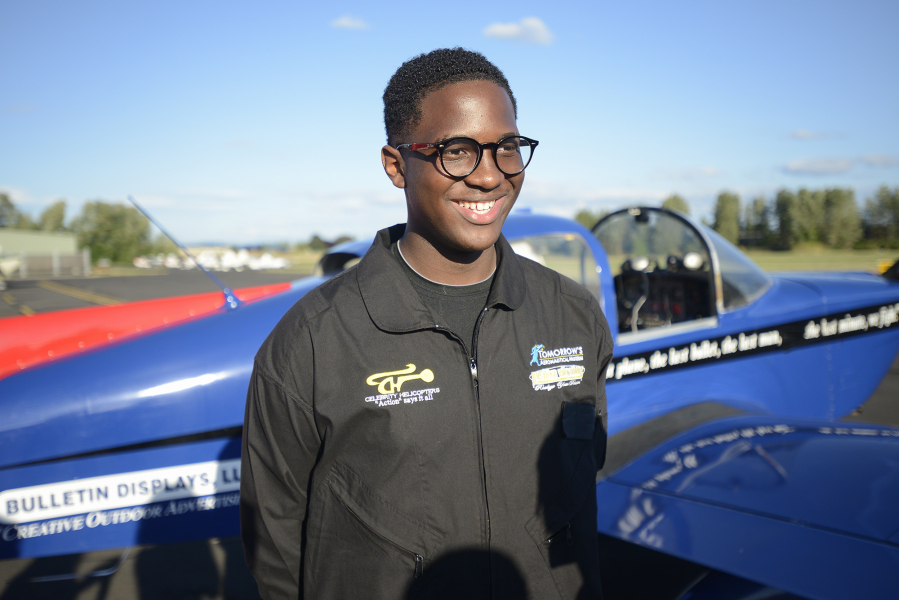“Aim High.”
The two-word message is painted on a Grumman Cheetah aircraft that touched down Tuesday afternoon at Vancouver’s Pearson Field.
It was the first leg of an ambitious journey for 16-year-old Isaiah Cooper, who is planning to pilot the single-engine aircraft around the continental United States during the next week or so.
That milestone would set the stage for an even more ambitious challenge. When he turns 18, Cooper wants to become the youngest person to fly solo around the world.
Since he isn’t old enough to get a pilot’s license, flight instructor Roger Azad is accompanying the teen on what Cooper calls a practice flight around the perimeter of the continental U.S.
But Cooper’s “aim high” motivation goes beyond aerial achievements. He is part of Tomorrow’s Aeronautical Museum — an outreach program in Compton, Calif., that uses aviation education to help at-risk and disadvantaged students.
It helped steer Cooper away from what he called the wrong crowd.
“I was in a dark stage” of life, Cooper said a few minutes after his 7 p.m. landing. “A lot of good people in Compton fall victim to their needs. It’s not that they don’t have resources; they just don’t know they have them.”
Cooper found resources at Tomorrow’s Aeronautical Museum. In addition to mentoring and goal-setting, the program helped him raise his grade-point average from 0.8 to 3.7.
And from a very practical standpoint, the museum provided the Grumman Cheetah that Cooper is piloting around the U.S.
Cooper’s 8,000-mile flight is expected to take about seven days — “if the weather is OK,” said Robin Petgrave, founder and executive director of Tomorrow’s Aeronautical Museum.
Cooper and Azad were greeted in Vancouver by Garrett Schmidt, director of the Pearson Field Education Center. The education center, a program of the Fort Vancouver National Trust, shares the mission of Tomorrow’s Aeronautical Museum. Petgrave was the guest speaker at the Pearson Field Education Center’s first fundraising event in 2014.
Cooper’s around-the-world goal was inspired by a couple of other young aviators. Barrington Irving was 23 when he became the youngest pilot to fly around the globe in 2007; Jack Wiegand was 21 when he accomplished the feat in 2013.
The mark now belongs to Matthew Guthmiller, according the Guinness Book of World Records; Guthmiller was 19 years, 7 months and 15 days old when he made his 30,000-mile, 44-day solo trip in 2014.
“Cooper got to thinking: If he did it at 18, nobody could beat him,” Petgrave said.
Encouraging words
Cooper got messages of encouragement from Wiegand as well as Irving, who sent an email Tuesday morning.
Today, Cooper and his co-pilot head east. Their route will eventually take them to Portland, Maine. Cooper then will head south, to Jacksonville, Fla. The westward leg will take Cooper over Texas and back to Compton.
It figures to be quite a homecoming for a guy who’d never left California before crossing into Oregon on Tuesday.
“It was amazing! I got to see Mount Shasta” from the air, he said.
Cooper had another perspective on his eventful day. He was able to turn a figure of speech into a new chapter in his life — “literally leave the nest and fly away.”




